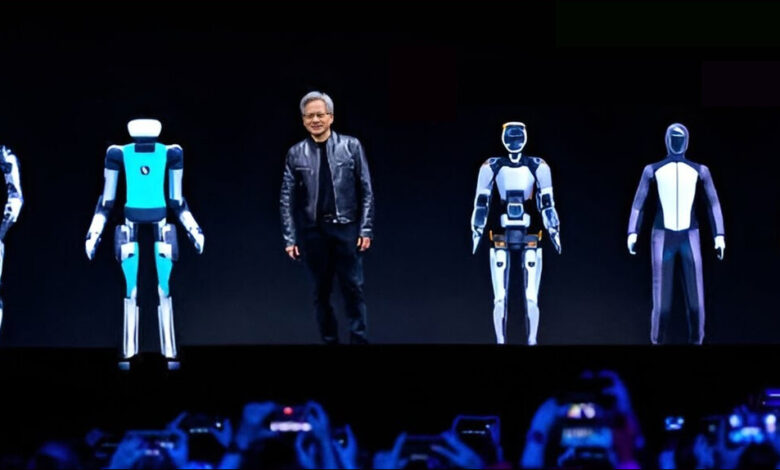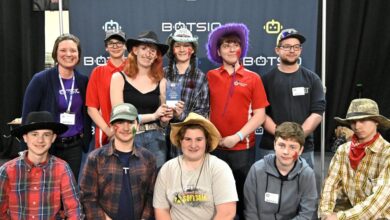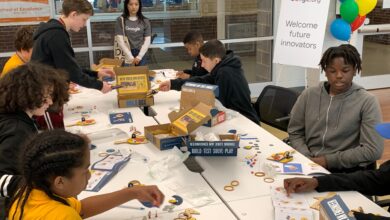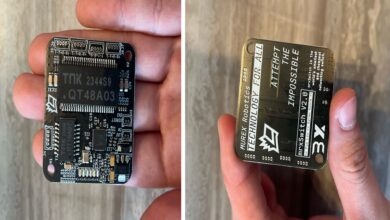Nvidia Project GROOT for humanoid robots

While this could be either good or bad depending on which side of the fence are, it’s safe to say that most of us alive today will end up interacting with humanoid robots at some point during our lifetime.
In a post that you may have missed last month, we covered Nvidia’s new L4 GPUs, a cost-effective solution for generative AI tasks and other entry-level AI operations. A lot has happened since then including Jensen Huang walking on stage at the GTC conference in California accompanied by two Disney humanoid robots. The robots nicknamed Green and Orange, mark the release of Nvidia’s biggest and Baddest chip to date, the Blackwell, built specifically for the largest language models with parameter sizes in the trillions. If you’re wondering what that has to do with the two Disney humanoid robots on stage, they’ve both been trained on Project GR00T, a system that runs on the Blackwell chips and teaches humanoid robots how to move like humans.
Blackwell
With a packed Hockey Stadium of over 12,000 people, Nvidia’s GTC conference is being called the “AI Woodstock” by some. In the spotlight were two interconnected technologies, Blackwell and Project GR00T. With the capability to process trillion-parameter AI models, thirty times faster, and with a quarter of the use of power, Blackwell GPUs are all set to power AI clouds around the world with top enterprise organizations queuing up for the brand-new silicon. Those organizations include every big name, from AWS to Dell, Google, Meta, Microsoft, Open AI Oracle, Tesla, xAI, and a few in India, like Shakti Cloud by the Hiranandani Group. The previous version of Nvidia’s GPUs for the largest language models was called the H100 or the “Hopper” and had about 80 billion transistors, Blackwell has 208 billion.
Compared to Blackwell’s predecessor, the H100 which requires 8,000 GPUs and 15 megawatts of power to create Chat GPT’s upcoming 1.8 trillion parameter model, Blackwell requires just 2,000 GPUS and a little less than 4 megawatts of power to do the same. Now while that’s definitely a game changer for large language models like Chat GPT and Google Gemini, an interesting point to note is that it’s still not the top of the line as far as silicon is concerned. Unlike rival Intel, Nvidia doesn’t make its own chips and leaves the manufacturing to the Taiwan Semiconductor Manufacturing Company. While the TSMCs latest offerings are the 3nm chips, Blackwell is using an older 4NP chip, which is surprising.
I AM GR00T
Imagine if you had to type code to train a robot to walk up to a drawer and open it. That would be a lot of code, and pretty complex from getting it to walk over, extend an arm, grip the drawer, and then bend an elbow back to open it. Imagine instead, if you could just do it first and it would copy you. That’s exactly what Project GR00T (Generalist Robot 00 Technology) is all about with a platform that helps humanoid robots learn to act and behave like humans purely by observation. While Nvidia claims the name is purely an acronym and has nothing to do with the Guardians of the Galaxy, they also have a new computing platform called Thor for humanoid robots.
Since this equipment is being used to train robots owned by Disney which also owns Marvel, it seems pretty safe to say there’s definitely some cross-over going on. Names aside, Project GR00T allows users to design robots that can not only mimic our movements, coordination, and dexterity but also understand natural language. Robots designed with GR00T can accept instructions in text, speech, or images, and can even mimic a human’s movements by watching a video. Nvidia CEO Jensen Huang demonstrated this by having the two Disney, GR00T-powered robots running on Jetson Thor computers follow him around on stage while also listening and responding to every word he said. He even told the little robots that it wasn’t time to eat yet and that he would get them a snack later to which the robots nodded their little robot heads.
We live in the future
Imagine a world with humanoid robots that could do everything you commanded them to. A robot to clean your house, wash your car, cook your meals, and clean your clothes. You could even program it to fix your car, repair your air conditioner, mow the lawn, or unclog the sink. We’re talking about a complete revolution of human labor which could see humanoid robots taking over every labor-intensive job from digging ditches to laying electric cables to building bridges. While this could be either a good or a bad thing depending on which side of the fence you live on, it’s pretty safe to say that most of us alive today will end up interacting with humanoid robots at some point during our lifetime.



